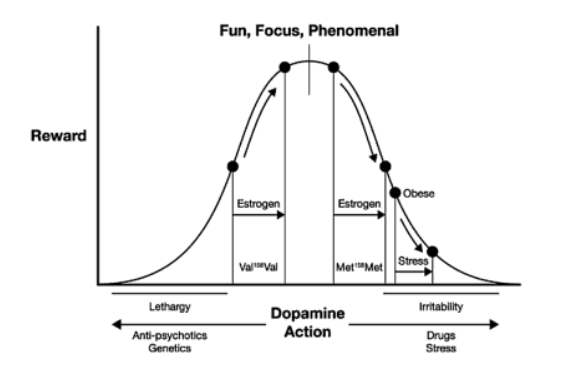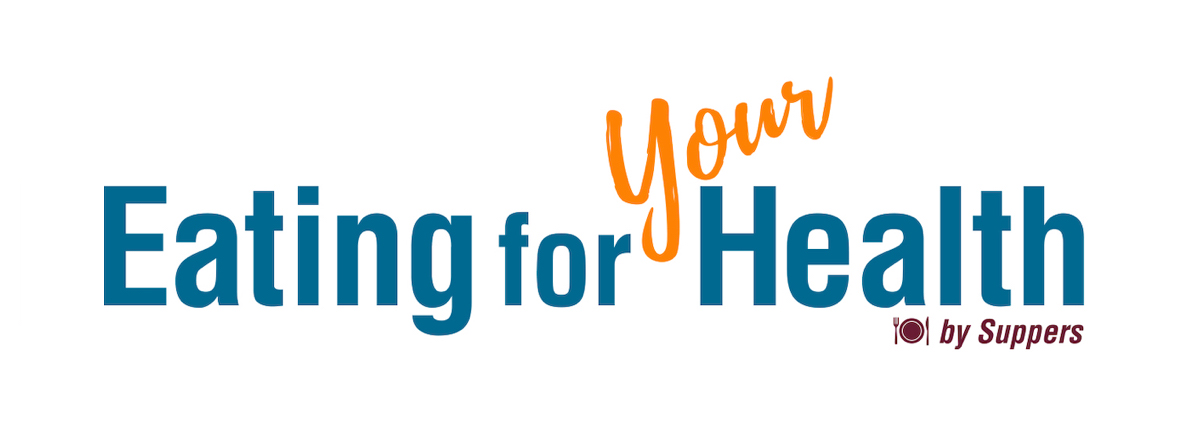Reviewed by Dor Mullen
In The Hacking of the American Mind, Robert Lustig, MD teases apart the often-entwined concepts of pleasure and happiness. He is unabashedly political and maintains that the hacking is executed by private interests with governmental support. With this book he intends to prove that profit is the sole motive for actions on the part of certain industries to obfuscate the link between their products and disease. Dr. Lustig is a pediatric endocrinologist, working especially with obese and diabetic children. In his 60s he decided to go to law school and work at a policy level to deal with our toxic food environment.
The difference between pleasure and happiness lies in the different neural pathways of dopamine and serotonin. Pleasure relates to reward while happiness is a state of being, an internal sense of contentment. In the how-you-feel-is-data world of Suppers, this is how they feel different from one another:
- Reward (pleasure) revs you up. Contentment calms you down.
- Reward and pleasure can come from substances like heroin, nicotine, cocaine, caffeine, alcohol and sugar. Happiness and contentment come from deeds and a well-nourished brain.
- Reward is short-lived. Contentment lasts longer.
- Reward and pleasure lead to a sense of wanting more. Contentment results in the sense of having enough.
- Reward takes place inside you; it is yours alone. Contentment can be more social.
- Reward is driven by dopamine (which we have described as the feeling you get when you anticipate dessert, alcohol, sex, a good deal on cute shoes) and contentment by serotonin (which we have described as feeling well rested, at peace, happy).
America has devolved into an addicted and depressed society because we abdicated happiness for pleasure, driven by a food industry that made pleasure cheap. Lustig’s position is that biochemistry always comes first, that is to say, that biochemistry drives behavior. His description of the neural pathways is actually fairly accessible to motivated lay readers, the best I’ve ever read. He describes three:
- The reward pathway refers to dopamine. When we experience the motivation and anticipation associated with this pathway (I’m being really simplistic here), it leads to the release of endogenous opioid peptides, which affect the brain like morphine or heroin. Dopamine operates in a deeper, more primitive part of the brain that is more about chemistry, not reason.
- The contentment pathway starts in a primitive part of the brain and connects all over the cerebral cortex, a more evolved part of the brain that thinks and makes judgments. This is the journey of serotonin.
- The third pathway is the stress-fear-memory pathway. Your brain is set up to wire you to avoid repeating painful or dangerous activity, and this gets really complicated. Your stress hormone production, memory, and highly evolved decision-making part of your brain work together to inhibit you from doing behaviors that put you at risk. (I can think of a few teenagers who haven’t experienced this phenomenon yet.) When it’s working as it should, the collaboration among the areas of your brain keeps your emotions from overwhelming your ability to think straight and your outward behavior in check.
Dor’s Takeaway Messages
- There are no good guys and bad guys here. We all need both pleasure and contentment. We would all plunge into despair without the pleasure pathways. It’s the possibility of too much pleasure that is making us a nation of addicts.
- The reward pathways are designed to assure survival of the species.
- In practical terms, if you’re using a word that ends in “aholic,” you’re talking about dopamine in play.
- Page 49 was the most useful for me in the book, depicting the dopamine bell curve that shows lethargy (left), fun and focus (center), and irritability, stress and obesity at the right.

- For Suppers, it’s super important to understand that if people are obese, they’re already past the central optimum on the bell curve. Add a cue like seeing an ad for your favorite cookies and the already-stressed system will likely succumb to unwanted eating.
- When there is too much dopamine, the result can be that the “wanting” associated with dopamine becomes “needing.”
- For women of menstruating age: Rising estrogen means rising dopamine. So, depending where you start on the dopamine bell curve, ovulation could put you into your optimal range OR it could send you into irritability and aggressiveness!
- Suppers-informed people should understand how critically important it is for people to know that the number of receptors for dopamine determines the magnitude of the reward. Anyone working with the public with obesity, eating issues, addictions is up against this, and I want you to understand this is not about will power. “Fewer receptors means more food intake is necessary to generate any reward.”
- Cortisol is an extremely important hormone. Without it, we wouldn’t get out of bed in the morning. But too much of it breaks us down. People who live with chronic stress – like those of lower socio-economic status – test to have higher levels of cortisol as well as higher rates of metabolic disease (like diabetes, stroke).
- Excessive cortisol literally kills off neurons (brain cells) in the memory center (hippocampus). The longer one has elevated stress hormones, the more vulnerable you are to memory loss and depression.
- Here is a point that makes scientific sense of why family and social support for healthy behavior change are so important: With the cognitive losses associated with stress, the ability to inhibit the drive to seek pleasure is lost. For me this means that nourishing someone and reducing stress has to happen before we can expect them to behave better. Cortisol actually kills the neurons that help you inhibit food intake.
- The effect is worse in children. Eating patterns are programmed in childhood. Studies on adverse childhood experiences, such as abuse, change the brain in ways that increase the likelihood of obesity in adulthood and the related disorders.
- My favorite line: “As the monetary price of reward fell, the physiological price of reward skyrocketed.”
- For anyone working with addictions, Lustig makes it easy to understand “addiction transfer,” which is what happens when, for example, an alcoholic stops drinking and suddenly can’t live without coffee, sweets, and cigarettes. Remember, dopamine is about anticipating reward; that anticipation has to be invested in something. I’m seeing this in bariatric surgery patients: Their anticipation wiring didn’t get surgically removed with their stomachs. They are at risk of becoming alcoholic because it still fits in their much smaller stomachs.
- It’s way easier to give yourself a dopamine response (get sugar) than serotonin response (behave in a way that leads to contentment). To make serotonin, you have to eat tryptophan; and it’s getting harder to find the healthy eggs, fish and poultry that contain it.
- Most meat in this country is from corn-fed animals and it doesn’t contain tryptophan. The luscious marbling of fat means the animal became insulin-resistant.
- Personally, I give our life and our love more credit, but I accept that most of us need to pay more attention to Lustig’s position that our emotions are just “the inward expression of biochemical processes in the brain.”
- “Altruism doesn’t activate dopamine but instead drives serotonin,” good to know!
- Altruism and contentment “co-migrate” as they both depend on serotonin.
- Volunteer!
- People with metabolic syndrome (often but not always fat around the middle, pre-diabetic or diabetic) have decreased serotonin function and are at higher risk for depression. Lustig says it’s the insulin resistance NOT the glucose that drives diabetes, depression and dementia.
- The more you develop brain insulin resistance...
- The more dopamine neurons fire...
- The less restraint of the reward system...
- The more anxiety and less cognitive inhibition...
- The more food (esp. sugar) consumption.
- The more food (esp. sugar) consumption.
- The more anxiety and less cognitive inhibition...
- The less restraint of the reward system...
- The more dopamine neurons fire...
- The more you develop brain insulin resistance...
- We live in an environment that is engineered to make sure we choose reward (which drives us in the opposite direction from contentment).
- The drive to accumulate money is about dopamine (fast reward). Research repeatedly confirms that once needs are met, more income does not generate more contentment.
- For Lustig’s political arguments, read The Hacking of the American Mind. He makes the case in terms used by our own constitution, that “corporations now have a legal right to interfere with your pursuit of happiness.”
Lustig concludes his book with a charge to – and I swear to you I didn’t know this when I put it on the book report list – cook!
